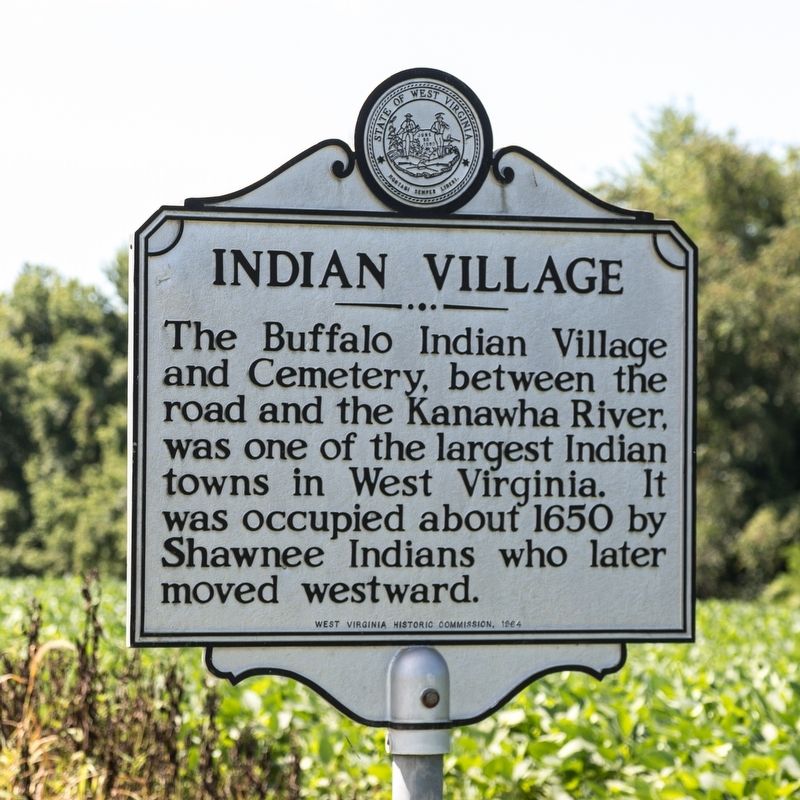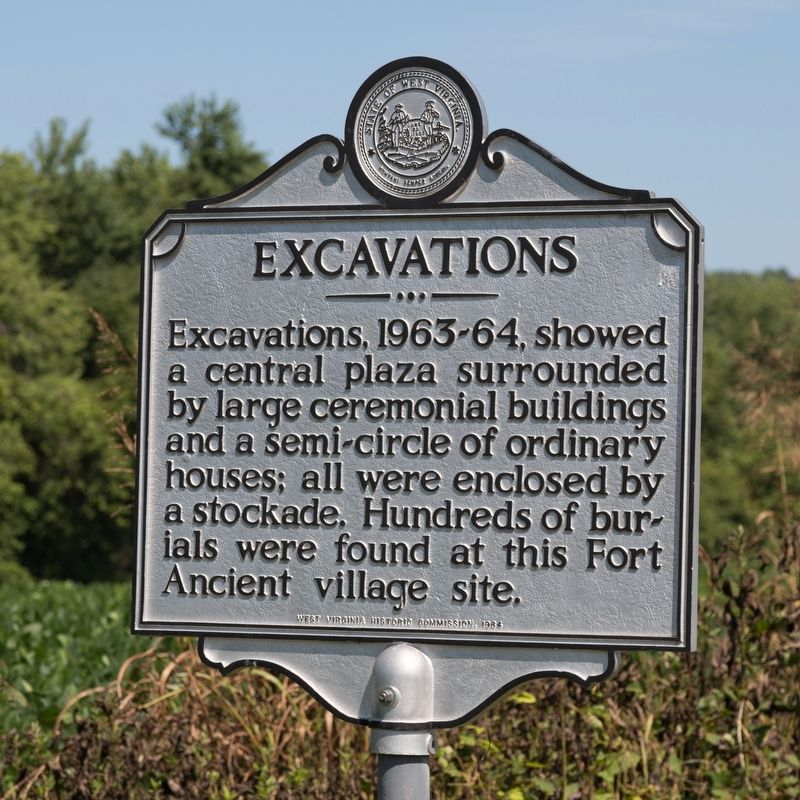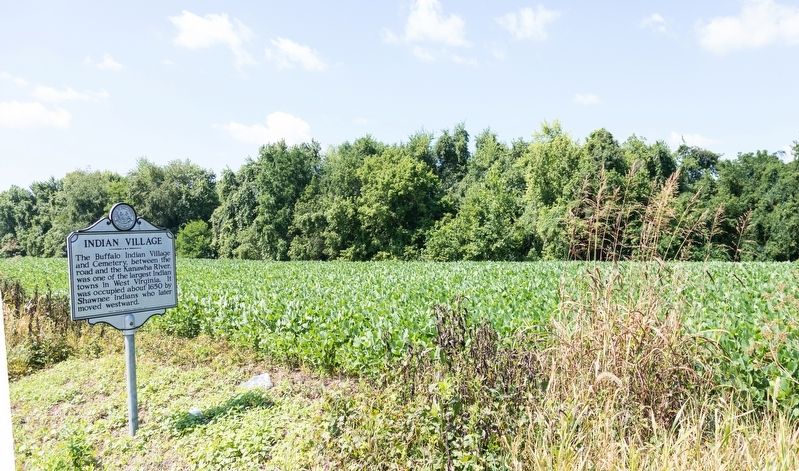Near Buffalo in Putnam County, West Virginia — The American South (Appalachia)
Indian Village / Excavations
Indian Village. The Buffalo Indian Village and Cemetery, between the road and the Kanawha River, was one of the largest Indian towns in West Virginia. It was occupied about 1650 by Shawnee Indians who later moved westward.
Excavations. Excavations, 1963-64, showed a central plaza surrounded by large ceremonial buildings and a semi-circle of ordinary houses; all were enclosed by a stockade. Hundreds of burials were found at this Fort Ancient village site.
Erected 1964 by West Virginia Historic Commission.
Topics and series. This historical marker is listed in these topic lists: Anthropology & Archaeology • Cemeteries & Burial Sites • Native Americans. In addition, it is included in the West Virginia Archives and History series list. A significant historical year for this entry is 1650.
Location. 38° 35.223′ N, 81° 59.747′ W. Marker is near Buffalo, West Virginia, in Putnam County. Marker is on Charleston Road (West Virginia Route 62) 0.3 miles north of the Kanawha River bridge south of Buffalo (Route 869), on the left when traveling north. Touch for map. Marker is at or near this postal address: 17704 Charleston Rd, Buffalo WV 25033, United States of America. Touch for directions.
Other nearby markers. At least 8 other markers are within 5 miles of this marker, measured as the crow flies. Raiders in Buffalo (approx. 2.3 miles away); Historic Town of Buffalo (approx. 2.3 miles away); “Lawnvale” / “Coin” Harvey (approx. 2.3 miles away); Buffalo Academy (approx. 2.3 miles away); Buffalo Presbyterian Church (approx. 2.3 miles away); Battle of Atkenson’s Gate (approx. 4.4 miles away); Putnam County / Mason County (approx. 4.6 miles away); General McCausland (approx. 5 miles away). Touch for a list and map of all markers in Buffalo.
Also see . . . e-WV entry for Fort Ancient Culture. Excerpt:
Fort Ancient is the name given to a late prehistoric culture whose people lived in present Indiana, Ohio, Kentucky, and southern West Virginia between A.D. 1000 and 1650. The name was taken from the Fort Ancient Earthworks in Ohio, which was originally thought to be from the late prehistoric period, but was later found to be an earlier, Woodland-era site.(Submitted on July 30, 2019.)
In West Virginia, Fort Ancient territory begins south of Sistersville, on the Ohio River, and includes the lower reaches of the tributaries of the Ohio and Kanawha rivers. Archeologists now believe that Fort Ancient society developed from local Woodland peoples and probably represented different ethnic and linguistic groups who shared similar traits, such as maize horticulture, shell-tempered pottery, bow-and-arrow technology, and in many instances, circular, palisaded villages. At least one early Fort Ancient village, Roseberry Farm in Mason County, had a burial mound associated with it.
Additional keywords. Roseberry Farm
Credits. This page was last revised on September 27, 2022. It was originally submitted on July 30, 2019, by J. J. Prats of Powell, Ohio. This page has been viewed 705 times since then and 81 times this year. Photos: 1, 2, 3. submitted on July 30, 2019, by J. J. Prats of Powell, Ohio.


